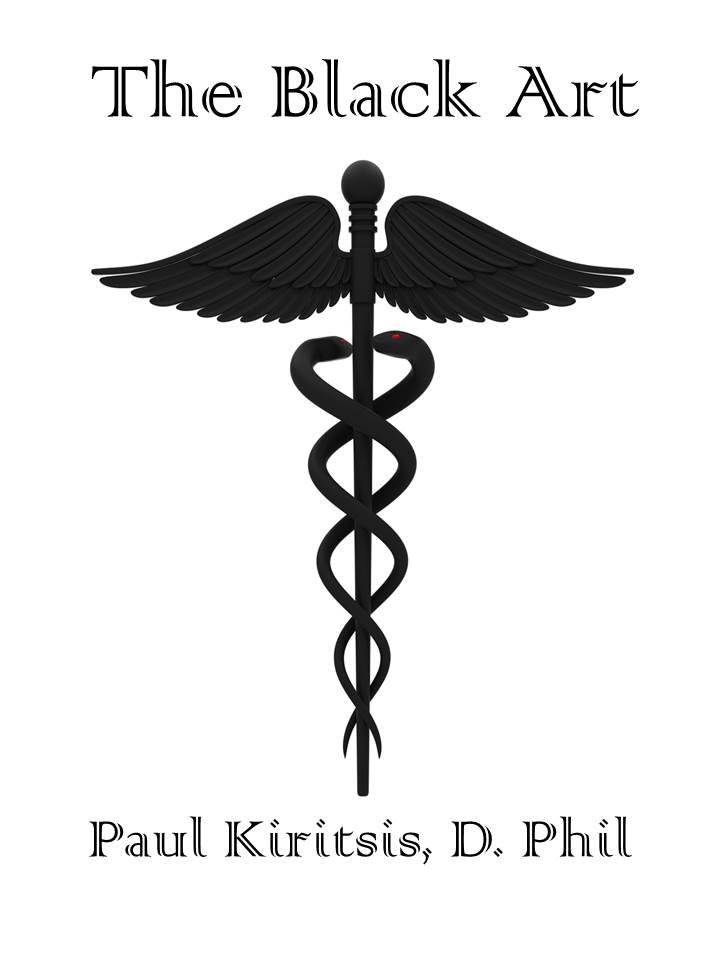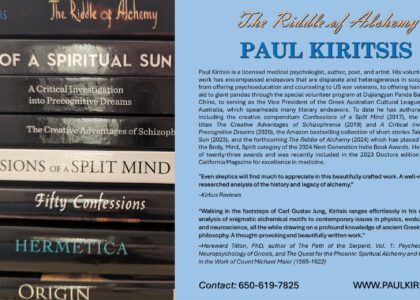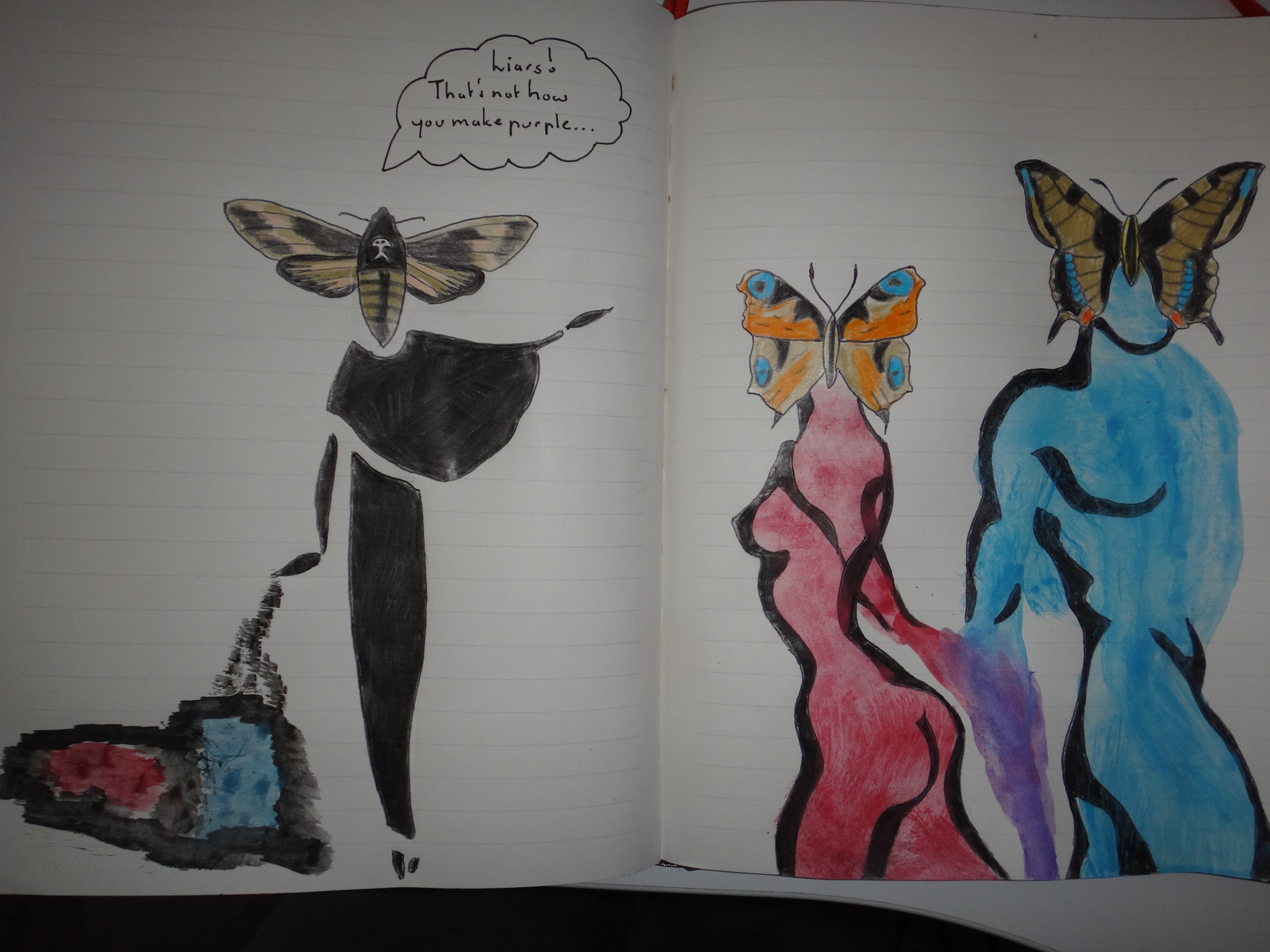
Englishwoman Mary Anne South (1817-1910) was a leading figure in the reinvigoration of the spiritual interpretation of alchemy during a Victorian era where every layperson seemed to be captivated by the occult. She grew up around her father, a wealthy and erudite gentleman who lived at Bury House, Gosport in New Hampshire and immersed himself in the psychic revolution of the nineteenth century. Thomas was an intellectual and creative individual with both the confidence and the financial means to pursue metaphysical interests and investigate his own theoretical propositions. During the formative stages of their cerebral partnership, South and his daughter joined an occult-orientated secret society called the Zojese where they learned about and conducted experiments into hypnotic phenomena. It also appears that they entertained metaphysical theories about the cosmos that had since been discarded by rational science and psychology, two self-appointed seekers of truth. Thomas and Mary Anne also participated in group therapy sessions involving the alleged polarization of mesmeric fluid in the bodies of ailing individuals through the application of “magnetic” forces, a technique which had been pioneered by Franz Anton Mesmer (1734-1815) late in the preceding century. Both were highly competent in classical studies and their sound knowledge of the Greek and Latin languages was equally commendable.
These circumstances set the stage for what would be a formidable symbiosis delving into popular areas of esoteric investigation. Father and daughter explored the works of the classical writers as well as the philosophia perennis of the Renaissance. According to their biographer W. L. Wilmhurst, their library brimmed with a wide gamut of recondite subjects including the Orphic hymns, the Chaldean oracles, the works of Plato, Aristotle and other noteworthy philosophers of the Classical Era; Hermetic and alchemical treatises such as the Pimander, the Asclepius, and various translations of the Tabula Smaragdina (Emerald Tablet); Neo-Platonic commentaries on Platonic theology; and more recent literary expositions on German Naturophilosophie. They studied everything they could get their hands on and left no stone unturned in their quest for knowledge of the divine.
It wasn’t long before they both came to the conclusion that the older cycle of dramatic classical mythologems involving the goddesses Demeter and Persephone and Aphrodite and Adonis were in fact exoteric leitmotifs of spiritual truths about the nature of the human soul. So too were the clandestine initiatory rites of the Eleusinian, Dionysian, and the Orphic Mysteries that gained religious and psychospiritual prominence during the advent of Graeco-Roman polytheism. Indeed, the ancients were possessors of divine wisdom and knowledge about the nature of God which they’d encoded into their myths for safekeeping. In the eyes of Thomas and Mary Anne South, only the worthy and noble of heart possessed the intellectual and intuitive keys able to unravel the deceptive symbols and patterns posed by these myths and discover their true meanings. Everyone else was doomed to failure simply because openly exoteric expressions of these truths had gradually degenerated into a cocktail of half-truths and falsifications with the passage of many generations. Why else would alchemists after Pseudo-Democritos (c. 200) keep confusing transcendental and mystical experiences with ordinary chemical operations, right? The dynamic duo reconciled their quixotic vision of a Golden Age now lost with Victorian enthrallment with the “occult arts” by further postulating that psychical research into clairvoyance, telepathy, survival, astral travel, and communication with spirits of the departed weren’t really symptoms of an erupting new age fad, but rather the long-awaited aurora of remembering knowledge, talents, and abilities that had been known to our ancient and revered predecessors. These interesting preconceptions formed the fertile humus on which their subjective insights concerning the Hermetic Art would firmly take root.
Before moving onto the crux of the Souths’ interpretation it should also be mentioned that Mary Anne was an active member of James Pierrepent Greaves’ theosophical circle and was probably influenced by what she learned there. Greaves was a traditional Behmenist, faithful to the theosophical musings of Jacob Boehme which had been rendered accessible to the general public through translations and annotations made by the English philosopher William Law (1686-1761). In scrying these it becomes blatantly obvious that Boehme employed liberal use of alchemical jargon to explicate his panentheistic vision of the cosmos. The alchemical veneer reaches a crescendo in his philosophical discourses Aurora (1612) and The Signature of All Things (1621). The motivating factor behind most Behmen literature was the animistic belief that all created matter–everything from unicellular organisms right up to the most intricate dynamic systems in the universe like speech production, language, mentation, and consciousness–was infused with a hieroglyphic ‘’signature’ that revealed its quintessential nature and its exact interrelations with other objects and substances in a multidimensional tapestry of nature that was itself connected to God. These signatures contained within the Aristotelian nisus of the object or substance to which they pertained and were infused into the latter by the sixth ray of creation, a creative emanation demarcated by Boehme as the sixth mercurial source-spirit responsible for illumination and expression.
Here we should recall that signatures, the notion that every piece of created matter contains within a vital life principle that reveals its subtle occult virtues or qualitative properties when properly deciphered, are a Paracelsian importation and that Boehme deliberately assimilated them into his septenary theosophical system because they complemented and esoterically validated his own beliefs about a patterned creation from a single divine source. Boehme took the alchemo-Paracelsian doctrine a step further by postulating that God worked through the reflective beauty of the Divine Sophia to infuse his hieroglyphic seals or signatures into everything, even into the human soul and its transmutational substratum. This makes him a unique thinker, at least within the context of Christian theosophy. The inspiration for this original and magical thought can be traced back a single moment in the year 1600 when he was involuntarily flung into what transpersonal psychologists today call a ‘peak experience’. Perusing the reflection of the sun’s rays in a pewter dish one day Boehme suddenly found himself without, caught in the waves of a psychedelic trance where the underlying principles of trees, plants, minerals, and all things stood united under the universal language of geometry and mathematics and coalesced under the insignia of divine love. The epiphany enabled him to penetrate through the veneer of appearances and experience the interconnectedness of all being, the mantle of creation as it stands unfettered by the compartmentalizing values projected by the perceiving mind. Given her avid participation in Greaves’ circles and interest in English theosophy, there’s no reason why direct knowledge of Boehme’s mystical visions shouldn’t have reached Mary Anne South.
After having collected and examined evidence in light of their own intellectual predilections and personal biases, the Souths jointly came to the conclusion that the occult discipline of alchemy wasn’t a protochemistry based on false theoretical premises. No, such an explanation was too clichéd, one-dimensional, and rudely inconsiderate and dismissive of ideas that had irrupted from some of the greatest and most creative minds to set foot on the planet. It made a lot more sense to view it as a mystical, transcendental, and salvific operation through which the practitioner became illuminated and gained knowledge of the immortality of his or her own soul. Recent advances in psychical research added credence to their ballooning conviction that illumination probably occurred through altered states of consciousness like hypnotic trance states. Once firmly established, they proceeded to transcribe theoretical and anecdotal details of this discovery into literary form. Thomas South embarked on a creative endeavour by working his insights about alchemy and the ancient wisdom into an epic poem in the classic Homeric style whereas Mary Anne commenced working on a prose piece about the same subject under the title of A Suggestive Enquiry into the Hermetic Mystery With a Dissertation on the More Celebrated of the Alchemical Philosophers. The latter was a fascinating Hermetic exposition attempting to skew the works of alchemists and philosophers so that they complied with a monolithic alchemo-mystical tradition of magnetic trance states conceived by the father-daughter synergy.
All seemed to go really well for the dynamic duo until Mary Anne’s book was published in 1850. Then something quite bizarre happened in the mind of Thomas South; something that sparked a swift change of heart. Feeling that perhaps he had no right to reveal in black and white a secret which all alchemists had gone to great pains to veil through the clever use of verbosity, cipher codes, puns, and symbols, and with exasperating chemical terminology aimed at befuddling and confusing the uninitiated, he recalled the one hundred or so copies that had been self-published through Trelawney Saunders and burned them on his front yard. There’s no reason why Thomas should take such drastic measures in recollecting copies that had been disseminated and destroying the disciplined literary efforts of his beloved daughter unless he believed in his heart of hearts that their publication and circulation would inevitably do humanity a huge disservice.
But what could possibly have changed in South’s consciousness to spur such a dark and foreboding outlook? Because the best explanation is often the simplest one, I would suggest that Thomas simply awakened to the realization that human beings, particularly those in power, often abuse and misuse discoveries intended to further our cause in a constructive fashion. And there was obviously no shortage of examples to illustrate the lamentable consequences that ensued when wiliness, egoism, and evil got the upper hand against the powers of love and goodwill. Nowadays it takes the form of governments utilizing the neutral scientific discovery of nuclear fission to fund nuclear weaponry able to annihilate the entire planet, but in South’s time it would have manifested as blood-sucking charlatans advertising themselves as magicians, fortune-tellers, hypnotists, and material alchemists for the sake of milking the credulous and hopeful of their hard-earned money. No doubt letting a discovery of the sort that Thomas South had envisioned onto the market would enable to wicked and immoral to get very rich and powerful very quickly!
In hindsight, something inconceivably explosive existed in Mary Anne’s work that warranted unforgiving censorship on her father’s part. The best possible way of understanding fears which seemed feasible to the both of them is to examine the contents of Mary Anne’s book. In an opening chapter entitled ‘A Preliminary Account of the Hermetic Philosophy with the more Salient Points of its Public History’, South presents a series of convincing anecdotal accounts from such widely respected figures in the alchemical tradition as Flamel, Helvetius, van Helmont, Edward Kelly, and James Price to support the opinion that metallic transmutation from lead or mercury to gold is actually possible. South posits that the reason why only a handful of adepts have succeeded in this is because alchemical recipes “have been the means of surrounding many a literal soul with stills, coals, and furnaces, in the hope by such lifeless instruments to sublime the Spirit of nature, or by salt, sulphur and mercury, or the three combined with antimony, to extract the Form of gold.” What she’s basically saying is that chemical operations alone aren’t enough to get the job done. If the prima materia being converted into the ultima materia or the Philosopher’s Stone was an intangible ‘psychic ether’ of some kind, and if the human being was the mechanism involved in repeated distillations and concurrently the substance being distilled (as she herself believed), then success in chemical transmutation must be contingent on the practitioner’s capacity to pour his or her own vitality into the chemical vessel.
From this perspective we can infer that the Souths regarded the alchemical secret to be mystical and magical in nature. While some basic alchemical experiments like maceration and decoction could be performed in a laboratory by almost anyone, success in what is termed the Greater Work (i.e. synthesis of the ‘red stone’) required an in-depth understanding of concentrative energy and its effect on matter along with knowledge about the individual stages of the alchemical opus. To fabricate the splendour of eternal gold, the practitioner had to emit a burst of concentrative energy into the base matter being cooked in the alembic at a specific moment during the circulation. The psychic energy would seep into volatile mass and effect changes at the subatomic and electronic levels. Mary Anne admits to the probability of such when she says: “It is not… that the Spirit is free from material bondage, or able to range the universe of her own sphere, that guarantees the truth of her revealments, or helps the consciousness on to subjective experience; for this a concentrative energy is needed, and an intellect penetrating into other spheres.” This ambiguous statement makes complete sense when viewed from the kaleidoscopic lenses of Mesmer’s and Boehme’s preternatural cosmogonies that were so very dear to her. Peering through these we see that in Victorian times altered states of consciousness were perceived to be something of a temporary empowerment to the human mind, a condition whereby an unfettered exchange of magnetic fluid between the human microcosm and the Universal Mind or macrocosm was deemed entirely possible. By collecting magnetic fluid from the Universal Mind in the manner that man-made solar panels harness energy from the sun, the conscious mind could then turn imagination and thought-desires into matter, or as Mary Anne puts it “move with demiurgic power and grace”. Hence the line between mortal temporality and divine immortality blurred when one plunged into mesmeric trance states, allowing humans to enact god-like feats and to make gold of detritus and dust.
For the Souths, carrying the weight of such a secret was burdensome yet tolerable as long as it was never divulged to the greater public in such a lucid manner. The latter, as their amicable actions revealed, may have ended up costing them a few pounds of conscience more than they could afford or bear.








